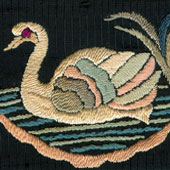The origins of the Parsis in India:
Long before the Parsis arrived in India as settlers, the small ports of Gujarat in north western India were familiar to the shore traders of Iran. These Iranian traders had set up shore trade posts but had not yet entered into any contract for cultural or social assimilation or syncretisation. There is no doubt that these Iranians were practising Zoroastrians and that they had no intention to either convert Indians to the Zoroastrian religion or be converted to local religious practices themselves.
It is only in the 8th century that Zoroastrians from Iran sought settlement "rights" in India as a corollary to religious persecution in their homelands of Yazd in Iran. These settlers probably came in several waves over a period of time and gradually adapted local Gujarati customs, dress, food, language, socio-religious rites while zealously safeguarding tenets of the Zoroastrian faith as proscribed in the Zend Avesta.
Adopting Saris as Parsi Dress:
Legend has it that when the Zoroastrians arrived in India they promised to "dissolve" in the land of their adoption like "sugar in milk". This promise was apparently made to Jadi Rana, a local ruler and included the adoption of local dress such as wearing the Indian sari the way the local Gujarati women draped it.
It is not known if these local women wore saris with borders or the heavy embroidery similar in nature which is now known Parsi "gara" embroidery. But then it was in late 19th and early 20th century with Sino-India trade that this trend became popular.
It is also popular that this trend was favoured by the wealthy Parsi women of Bombay (now Mumbai) as a mark of distinction from socially lower ranking Parsis from other parts of Gujarat (then part of the Bombay Presidency) who were mostly farming women or wives of farming Parsi men. These women were mostly wives of wealthy Merchants.
One thing is clear, however, that the heavy embroidery and embroidered borders (called "kor" in Gujarati) were favoured by wealthy Parsi women who had access to them and who could afford the luxury of silks, chiffons, velvets and lace as daily wear.
The popularity of Embroidered Saris and Borders:
Another reason for the popularity may have been because these wealthy Parsi women wanted to draw parallels with British women (who favoured Chinese embroidered textiles for their “exotic” form and value) and therefore (in the absence of their own caste and class compartmentalisation) an affinity with the ruling class.
The Author’s Personal Connection with Parsi Embroidery:
This treatise is based on my own collection of sari borders or "kors" handed down to me from my mother Mrs Manijeh Boman, her mother Mrs Tehmina Rustomji Patell and my mother's paternal grandmother Mrs Gulbai Pallonji Patell. The collection, collected over a century by three generations of Parsi women is a reminder of the call of the Chinese vendor who used to come to our home in Bandra Mumbai with the cry "Kapla! Kaplaaaa!" his own version of the Gujarati yodel "Kapra" or garments.



